A new interpretation of 3,800-year-old inscriptions discovered in an Egyptian turquoise mine has reopened one of archaeology’s most controversial debates: Did Moses, the biblical leader of the Exodus, ever exist?

Independent researcher Michael S. Bar-Ron believes the answer lies in the Proto-Sinaitic inscriptions carved into rock walls at Serabit el-Khadim, an Egyptian Sinai Peninsula mine site. After eight years of study using high-resolution photos and 3D scans provided by Harvard’s Semitic Museum, Bar-Ron says he has discovered two inscriptions reading “zot mi’Moshe” — Hebrew for “This is from Moses” — and “ne’um Moshe”, which means “A saying of Moses.”
If verified, these would be the oldest extra-biblical inscriptional references to Moses, a figure long documented in religious tradition but never confirmed by archaeology. The inscriptions are part of a group of over two dozen Proto-Sinaitic inscriptions first unearthed by Sir William Flinders Petrie early in the 20th century. These writings, which were likely created by Semitic-speaking laborers during the reign of Pharaoh Amenemhat III (c. 1800 BC), represent some of the earliest alphabetic texts known, even predating Phoenician.
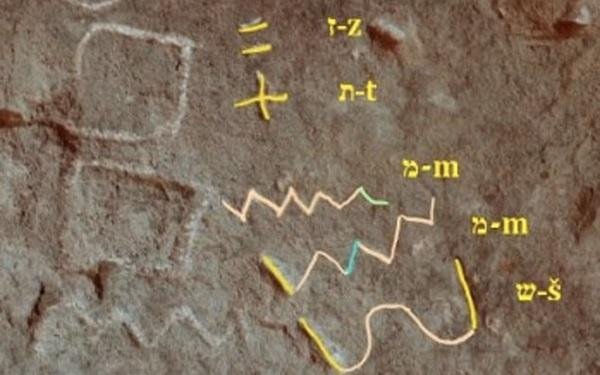
Bar-Ron’s theory is not, however, without debate. In his proto-thesis (or early thesis), he suggests that these inscriptions are the voice of a single scribe who had knowledge of Egyptian hieroglyphs and used Proto-Sinaitic script to encode religious and personal messages. He believes the personal tone and poetic form of the scribe support a single authorship.
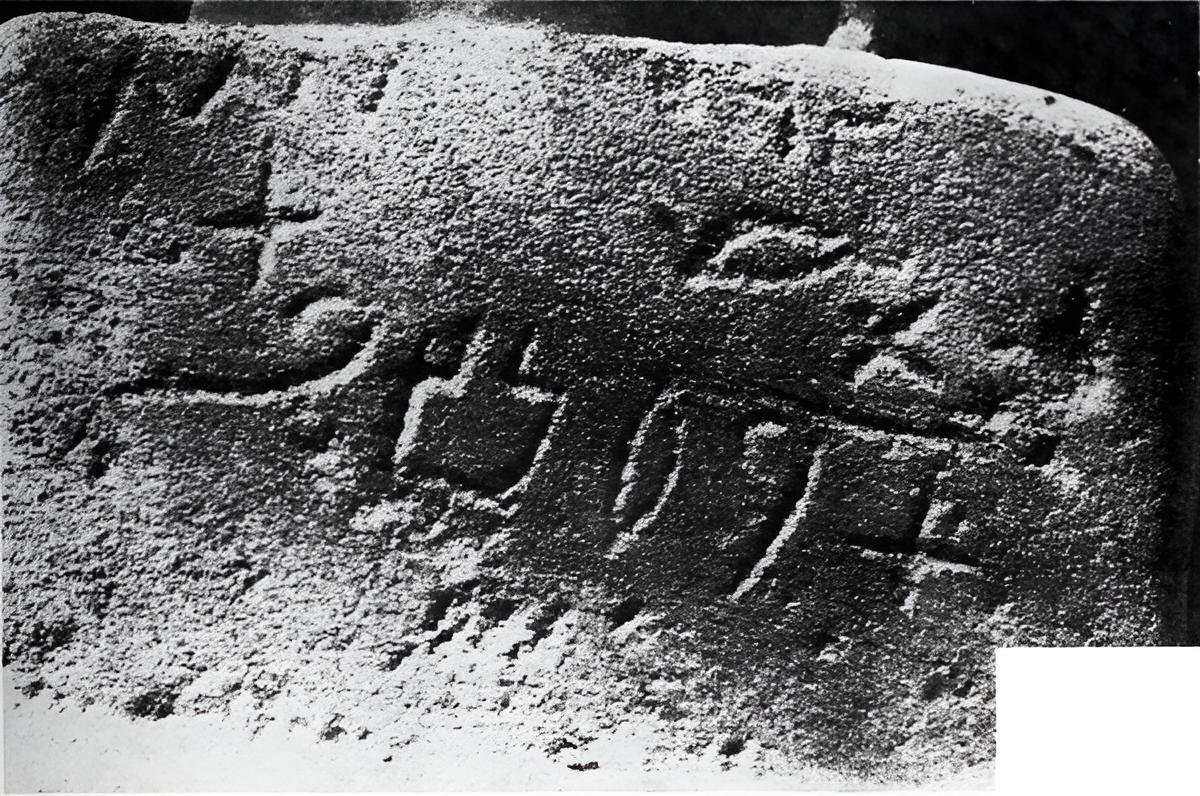
The inscriptions yield more than possible personal markings. Nearby inscriptions contain invocations to “El,” the archaic Hebrew deity, while others praise Baʿalat, the Semitic counterpart of the Egyptian goddess Hathor. Some of the inscriptions in honor of Baʿalat appear to have been scratched out by followers of El, pointing to a theological rift. A burnt temple dedicated to Baʿalat and inscriptions that mention “overseers,” “slavery,” and a call to depart—possibly to be interpreted as “ni’mosh” (“let us depart”)—give support to religious rebellion and mass departure, recalling the biblical Exodus.
Archaeologists have also uncovered the Stele of Reniseneb and the seal of an Asiatic Egyptian official at the site, pointing to a strong Semitic presence. Bar-Ron even speculates a link to the biblical Joseph, making comparisons with figures like the Semitic vizier Ankhu, who served during the reign of Amenemhat III.
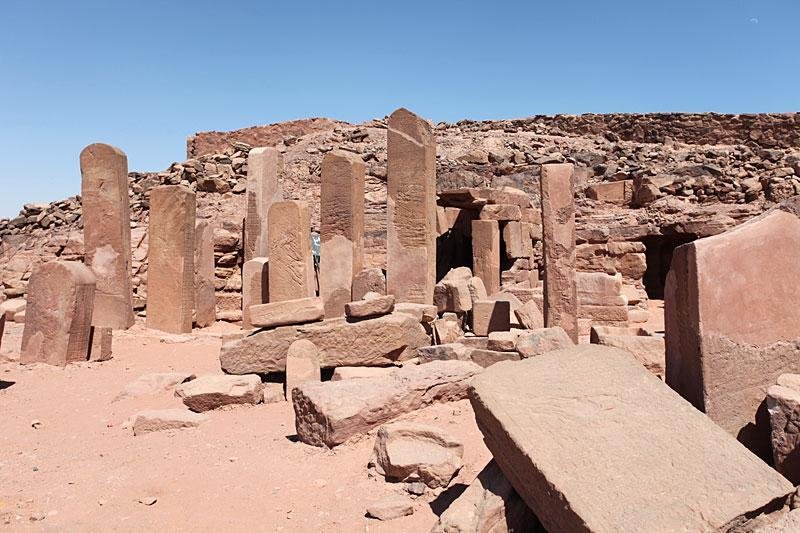
Despite the hype, not everyone is convinced. Per The Daily Mail, Dr. Thomas Schneider, an Egyptologist at the University of British Columbia, dismissed the assertions, calling them “completely unproven and misleading,” and cautioning that “arbitrary identifications of letters can distort ancient history.” Proto-Sinaitic script is notoriously difficult to decode, and skeptics argue that subjective interpretations can easily lead to the wrong conclusions. But Bar-Ron’s academic advisor, Dr. Pieter van der Veen, supports his research.
Bar-Ron acknowledges that his research, which has not yet been peer-reviewed, is still in progress. He hopes that more research will either challenge or more conclusively prove his claims.
Whether or not the inscriptions refer to Moses, the finds at Serabit el-Khadim nonetheless revolutionize our understanding of ancient Semitic workers in Egypt and their evolving religious identities.




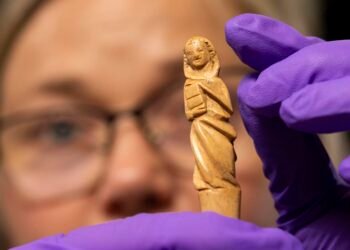

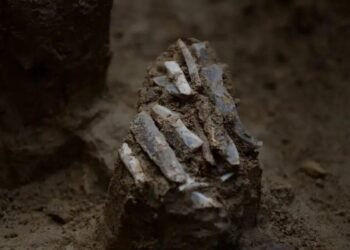

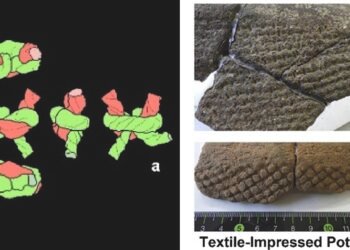














It seems made up to validate Biblical narrative.
Or perhaps the Biblical narrative is true and this is evidence.
What do you say when other ancient artifacts are found which verify other historical events?
Yep, there was a Smithsonian article several years ago claiming to have proven King David existed. He claimed a lot of things but had zero evidence to back it up including Davids summer palace that didn’t exist. Claimed hundreds to thousands worked in the cooper minds in the middle of a dessert days from the rest of society yet had no landfill ,fire pits which would be evidence of human inhabitants and their culture and beliefs..In the case of this article and Moses, if it in fact says Moses we know there were many other religions that have the same story lines that the New Testament has. A man born of a god and mortal woman who’s life and experiences paralleled that of Jesus including his death all of which came before Jesus. While there could have been a man named Moses it doesn’t mean he climbed a mountain and was given a stone tablet by God and clumsily dropped and broke it twice and had to return to get copies that didn’t say the same thing as the ones before.imagine finding s baby floating in a basket in a river. You can’t make this stuff up. Oh wait….
I think you should actually read Exodus. Your interpretations of the stone tablets being “clumsily” dropped and broken twice made me laugh. As well as your insinuations that the Old Testament is “made up”. There is a significant about of evidence that validates historical truth to the Old Testament.
I think you should definitely read Exodus. And the facts you try to deliver are not anywhere near facts. Moses was neither like Jesus nor do their stories compare. And this is actually not new news either. There’s a great documentary on how it’s very possible the timeline is messed up for when the jews or what would be the jews were in Egypt. We know they were there based on what the bible says and what has been found in Egypt. But I would suggest you get your “facts” correct because it’s the Old Testament that is the story of Moses and there are not other religions that have had the same stories other than those religions that came from judaism. But there is no ancient stories whatsoever that compares to the New Testament and that of Jesus so you’re incorrect absolutely on that one. And just one tidbit of info for you, there was a stele discovered from another ancient civilization that had went to war with ancient Israel and the stele commemorates the king on his victory against King David and the Israelites. So we know he existed as well.
Exactly—twisting archaeology to fit the Bible is textbook pseudoscience. Manipulate the findings to force it into Biblical narratives? That’s not science—it’s dogma in a lab coat. Distorting archaeology to align with the Bible is pure pseudoscience.
We know they worshipped other God’s. I believe we don’t need a fabrication to have faith in this because we have evidence of a flood.
People choose to believe in such things as they will but as history rewind is not hard to believe nor except, because science believe people exist them so why couldn’t Moses and Jesus, just keep digging and alot of things are gonna be difficult to except when the real truth is understood,, some people want like what they will find out about themselves and thier very existence,, and where they really came from and who they came from,,, bold truth
No, there is no evidence -zero, zilch, nada – of any global flood.
You keep telling yourself that lie.
Same to you.
Moses was an Egyptian name given to an Israelite child. He was most likely not the only little boy with this name – there may have been many with this name. the context of the writing with which it was found only leads to more questions..
I totally agree with this statement. Bravo
A lot of people overlook the fact that “Moses” is an Egyptian name.
As fascinating as this discovery is, I think we all need to keep in mind that if one person was named Moses (and I have no issue with the idea of an historical “Moses” written about in the Old Testament), there had to have been others.
Firstly, Moses was given the Egyptian name by an Egyptian princess which makes sense because he was raised in the royal family! According to the Bible and the fact it actually is an Egyptian name gives more credence to the Biblical narrative
Timing would.be off from Biblical narrative. Israeli slaves were building city of Ramses dates to around 1350 BC.
Not sure about Ramses, but 1800BC seems way too old.
They did not build the city of “Ramses!” They built the city before it was ever called the city of Ramses. Which btw, that city was renamed later. And there’s good reason for it being recorded as the city of Ramses in the Bible. So how do you suppose the city was called that in 1350 BC but was actually built much earlier!
Evidence of a flood doesn’t nearly prove the Bible to be true, necessarily, when hundreds of other cultures also have their account of the flood. It’s all the same story rewritten to suit the times and the directive of the authors
And what about the broken tablet pieces of Thutmose / Tobadzischini / Pahana with the name Mosheh in Proto Canaanite script that washed to my feet 6315 days ago in San Clemente, CA. Who did those belong to???
Great article
Of course El was not just “the archaic Hebrew deity,” but also a much earlier Canaanite or other Semitic deity or deities, distinct from the Hebrews or Israelites who later adopted El as a god.
Ba’alat, too, was a Canaanite/Phoenician goddess and all the Canaanite languages, including Hebrew, were mutually intelligible, so describing Proto-Sinaitic inscriptions as being in “Hebrew” is misleading. These inscriptions likely preceded what developed as “Hebrew” by a long time in any case.
I am a layman, but from what I have read over the past 20 plus years (during which time the understanding of Proto-Sinaitic has evolved and there have been epigraphic discoveries), my take is that Proto-Sinaitic was Proto-Canaanite from which the Phoenician/Canaanite alphabet evolved, later to become the “Paleo Hebrew” alphabet as well. I believe the Canaanites, as opposed to the differentiated Hebrews or Israelites, were in the Sinai and interacting with Egypt at that stage. There are lots of overlaps in the peoples, languages and writing systems (not to mention terminology), but the tendency to Hebraize everything in the region is disappointing, and a disservice to scholarship and knowledge. It will be interesting to see what more is discovered and how studies of the region evolve.
Very well-stated, sir. Thank you for your thoughtful comment.
Most people agree this writing is Semitic and evolving from hieroglyphics around the time of Moses or earlier. Perhaps it wasn’t actually turquoise miners in 1800 BC, but rather 1440 BC Hebrew people wandering in the Sinai desert. What made Petrie so sure that this writing on stone was 1800 BC? I see no reason it couldn’t be 15th c. BC.
No one has proven conclusively the later dates nor the early date for the Exodus.
What makes one think is that the dating would be in agreement with the proposed backdating of the biblical exodus, still a subject of debate, but which would also be in agreement with archaeological finds in Palestine and Jericho.
People will always be inflamed whenever they see anything about a Bible character in it. For many of these individuals, they only wish the Bible was mere fiction. Sadly, their wishes won’t be. The more you argue, the better things become. Moses lived, the Bible is true
“If we accept the fundamental principle that the amount of water on Earth has remained constant from the beginning of the planet’s existence until now, and also considering that the mass (and thus the gravitational force) has similarly remained unchanged, then the idea of a flood with such a volume of water being able to place a ship atop a mountain peak is scientifically unacceptable. Essentially, this quantity of water has never existed on Earth’s surface. 🙏🙏🙏”
Look up “ringwoodite” ocean of water in minerals 400 times the volume of the entire ocean surface of the earth. The “fountains of the deep were broken open”
Firstly, mountains weren’t as tall as they are now. And have you forgotten how much frozen water is on this planet?! If Antartica’s ice completely melted that would raise ocean levels by 190ft. That’s not counting the Arctic ice! That would cause it to be higher. The ice sheet is literally 3 miles thick from the top to the actual dirt land of Antarctica at its thickest point. There’s plenty of water on the planet to flood a lot of stuff. And there’s no actual evidence to say that the mountains of Ararat that the Bible speaks of is the one and the same as the one mountain that is called Mount Ararat. Two totally different things.
And yet they have found marine animal fossils on the too of mountains!!
People see what they want but that applies to both sides in the argument. That it applies to all of us is the part that is the hardest to accept.
I agree with Maunder…that said, I have my own beliefs about what is and how it was…man…the article is interesting…more about when, where and the site relationship to trade routes would be of further interest…
I accept that I do not fully understand the intent nor the original meaning of any ancient writing or tablet text. If I could read those same writings or tablets as a contemporary of the authors, my view would be different at least. As is, I am left with the opinions of others, consensus groups, or my imagination. I prefer the latter. E. Maunder, Science Of The Stars
Interestingly, this time frame differs markedly from a textual literalist chronology of Moses (ca. 1450 BCE) and the revised chronology (ca. 1250 BCE) that most Christians and Jews use for historical context. This would not be what either would expect, or know what to do with. If correct it seems to bring written forms of semitic language in the area a good deal farther into the past. Fascinating!